How Canada Was Created to Block US-Russian Cooperation
What Are We Really Celebrating on Canada Day?
This is the last part of a trilogy on the Arctic as a battleground of the 21st century. Part 1 is here, and Part 2 is here.
This third part will deal with the problematic chess piece in the British Empire’s grand chessboard titled: the Commonwealth of Canada.
Understanding the true agenda behind Canada’s origins are necessary to understand why it has been the curse of Canada to be endowed with the most bountiful resources and landmass on the one side and the most underdeveloped population, with only thirty three million inhabitants, strung across a 8900 kilometer border on the other, while its cousin to the south has a population of over 320 million.
The average density per square mile is a mere 3.75 people per sq. km for Canada compared with 34 people per sq. km for the United States. This low density of the Canadian population is in keeping with the deliberate policy of the financial oligarchy to reduce the population of the globe from the current 7.6 billion to 1 billion people.
Today, as the world is threatened by the two-pronged threat of a collapse of world population by the destruction of food and water availability on the one side and thermonuclear war on the other, it is of dire necessity that such large scale development projects as the Bering Strait tunnel rail corridor be commenced post haste in the context of the new multipolar system being led by Russia and China.
The Bering Strait tunnel involves a U.S.-Canada-Russia-China alliance for Arctic development that would extend China’s Polar Silk Road into the Americas, and touches on a policy fight which stretches back over 150 years. For this project to move forward, however, it is imperative that Canada (and the USA) let go of its British imperial traditions.
A Clash Between Two Systems
Lincoln’s economic advisor and leader of the international export of the American System of Political economy, Henry C. Carey, described this clash between two systems in his 1851 Harmony of Interests:
“Two systems are before the world; the one looks to increasing the proportion of persons and of capital engaged in trade and transportation, and therefore to diminishing the proportion engaged in producing commodities with which to trade, with necessarily diminished return to the labor of all; while the other looks to increasing the proportion engaged in the work of production, and diminishing that engaged in trade and transportation, with increased return to all, giving to the laborer good wages, and to the owner of capital good profits…
One looks to pauperism, ignorance, depopulation, and barbarism; the other in increasing wealth, comfort, intelligence, combination of action, and civilization. One looks towards universal war; the other towards universal peace. One is the English system; the other we may be proud to call the American system, for it is the only one ever devised the tendency of which was that of elevating while equalizing the condition of man throughout the world.”
Carey, just like the British Empire’s Lord Palmerston, clearly recognized that America had not completed “the mission of 1776,” since not one, but TWO Americas existed within Washington: One positive America representing the anti-slavery/anti-colonial principles of the 1789 constitution vs. another hypocritical slave power that never believed that “all men were created equal”.
Just as two antithetical impulses existed within America, so too did two opposing views of “Manifest Destiny” co-evolve since 1776: One hellish version driven by the ‘principle’ of spreading slavery as advocated by the confederate Knights of the Golden Circle, which aimed to create a world empire of slavery (with Cuba as its capital)… and the other based on enobling humanity and liberating the world from systems of empire.
The Stage is Set for a Forgotten Battle
By now, most informed people are aware of Russia’s 1863 intervention into the Civil War as a turning point that blocked British and French imperialist forces from entering the war militarily on the side of the Southern rebels. What is not so well established is how Russian and American grand strategy to connect the continents by rail did not occur as it was intended after the sale of Alaska.
There are several convergent factors at play during the 1865-1867 period, which presented a major challenge to the weakening British Empire strategists:
The need to confederate British territories in North America as possession of the Empire instead of allowing them to either become independent nations or annexing to Lincoln’s republic.
If this first task could be done by ousting pro-Lincoln forces in Canadian political power and killing Lincoln, then the next task involved transferring the vast private territories owned by the Hudson Bay Company, separating eastern colonies from the lone western outpost of British Columbia on the Pacific. The majority of Canada during this pre-1867 period was private Hudson Bay land, as it had been since it was chartered in 1670 by Prince Rupert.
If this transfer of Hudson Bay possessions into federal hands could be affected, then it would still be necessary to somehow persuade the fiercely independent British Columbian subjects to join Confederation. This was not a simple task as the vast majority were in favor of annexing to the USA due to the economic despair of their colony caused by the collapse of the Gold rush bubbles in 1858, and total isolation from the other British American colonies.
The Anti Union Confederacy That Succeeded
On July 1, 1867, the British North America Act was enacted, consolidating Britain’s “other” anti-American confederacy operation under a new constitution, dedicating the new federation’s existence to be conducive “to the Welfare of the Provinces and promote the interests of the British Empire”.
It should be kept in mind that the project to confederate actually began during the Civil War in the form of a week-long booze-soaked orgy of the Charlottetown convention of 1864, which hammered out the resolutions later put into law in 1867.
Some have wondered why, just days before the July 1, 1867 enactment, would-be confederate President Jefferson Davis gave a speech to cheering crowds in Lennoxville Quebec, stating: “I hope that you will hold fast to [your] British principles and that you may ever strive to cultivate close and affectionate connections with the mother country”.
This pro-British gushing from a confederate traitor in Quebec shouldn’t be surprising at all if we take into account the fact that Montreal and Toronto served as Southern confederacy bases of operations, used with the full support of the British Empire to run terrorist operations, raids, espionage and financing of the war against Lincoln’s forces from the North (while Canada “officially” maintained an air of neutrality).
Even Lincoln’s assassin, John Wilkes Boothe was discovered to have been deployed from Montreal to kill Lincoln, with union officers discovering a $500 cheque amidst his possessions signed directly by none other than Ontario Bank President Henry Starnes (who would later become Mayor of Montreal).
As Barry Sheehy pointed out in Montreal: City of Secrets, during the Civil War, “the largest Confederate Secret Service base outside Richmond was located in Montreal,” under the direct control of confederate Secretary of State Judah Benjamin—himself an asset of British Intelligence.
Much like the exiled Russian and Hong Kong oligarchs and traitors of the modern day, Jefferson Davis, Judah Benjamin and many other confederate rebels lived out their days in comfort in both Canada and Britain (Benjamin becoming an English Barrister in London from 1865 until his death in 1884).
The Sale of Alaska
The sale of Alaska stands out as an incomprehensible historical anomaly for many who choose to see history merely as a sequence of linear events determined by “practical decision making”.
Why did it happen? What motives did Russia have for selling this vast expansive territory, so rich in resources to the United States?
Most people have come to believe that Russia and the USA have always been natural enemies, and thus this question becomes additionally perplexing… however, the answer will astound you.
To comprehend this sale, it will be important to go back 10 years prior to the Russian intervention to save the USA during the Civil war… to 1853.
At this time, the Ottoman Empire was slowly failing, Russia was sliding into war and the USA was heading towards its own existential civil war. Unbeknownst to leaders of both countries, a grand trap had been set.
Advisors dominating the government of Czar Nicholas I promoted the belief that Russia could take territories from the weakening Ottomans and promoted a foolish policy of expansionism, not realizing that they were falling into a trap set by the British Empire, which would soon see Russia fall into a 3 year wasting war against an alliance of France, England and the Ottomans.
This became known as the bloody Crimean War, running from October 1853 to February 1856.
The war’s outcome saw Russia humiliated, indebted and crippled morally and physically.
In response to this failure, a new breed of statecraft arose, as an enlightened Czar (Alexander II) took the reins and ended the Crimean war.
With his leadership, statesmen such as the Grand Duke Constantine, General Nikolai Muraviev, Foreign Minister Gorchakov and the great Russian Ambassador to America Eduard de Stoeckl gained a new level of influence, and a new foreign policy doctrine was created.
This doctrine was exemplified by an enhanced appreciation of the destructive role of the British Empire’s global strategy and the importance of America as a collaborator and partner.
In 1861, Czar Alexander II quickly began tackling endemic corruption, and worked to transform Russia by freeing the 25 million Russian serfs who had lived for generations as human cattle, earning him the namesake “the Great Liberator”. This occurred only months before Abraham Lincoln was to earn the same title by announcing the Emancipation proclamation ending slavery in the USA.

Despite the fact that neither man ever met each other in person, the US-Russia alliance that they established changed the world in ways that have still not come to be realized 170 years later.
The British Empire was petrified that a Russian-American friendship would set into motion a great power alliance capable of undoing its global hegemony. Russia and the USA had already developed a historic bond, with Czarina Catherine the Great leading the League of Armed Neutrality that guaranteed US victory in the 1776 battle for Independence, and American engineers had helped to guide Russia’s construction of its first rail lines connecting St Petersburg to Moscow in the 1840s under the leadership of George Washington Whistler.
One of the few means Britain had to keep these two historic allies from uniting remained its territories of Canada, and especially the colony of British Columbia.
This colony was then an isolated and bankrupt outpost on the west coast separated from Britain's other four colonies on the east coast by 3000 km of undeveloped wilderness privately owned by the Hudson’s Bay Company. For nearly two centuries, this private land was managed by Jesuits and Anglican agents of the Empire, and intentionally kept the frontiers of North America unexplored, as Canada was expected to be nothing more than a land of furs without any industries, or infrastructure—an economy made up of fur traders, hewers of wood and drawers of water, but nothing more.
The explosion of technological progress within the young republic made this agenda precarious, and pressures mounted as Canadians looked towards their southern cousins, and also began to crave for the fruits of modern progress. By the time of the Civil War, dynamics of technological growth on both major nations flanking Canada resulted in a trend that saw Britain’s grip over its colonies slowly slipping.
Before the Civil War in the USA had begun, Czar Alexander II’s brother and advisor Grand Duke Constantine wrote to Ambassador Eduard de Stoeckl, saying:
“The United States of North America should in the course of events be eager to conquer all of North America and will therefore meet us sooner or later and there is not the slightest doubt that it will seize our colonies without great effort, and we shall be in no possession to retain them”
As early as 1853, Russian statesman General Nikolai Muraviev had already promoted Russia’s sale of Alaska to the USA in a letter to the Czar, stating:
“Due to the present amazing development of railroads, the United States will soon spread over all North America. We must face the fact that we will have to cede our North American possessions to them.”
The Civil War and Russia
By 1862, the Civil War had begun in full force, and with British corporations and Foreign Office supporting the Confederacy, tides had quickly turned against Lincoln. The British possessions of Toronto and Montreal served as Confederate bases, from which dozens of terrorist attacks were launched against Lincoln’s Union from the North.
As outlined in the book City of Secrets by Barry Sheehy, even Lincoln’s assassin John Wilkes Boothe was proven to have been in Canada for over 5 weeks prior to the murder, where he received payment, training and directions from British-sponsored confederates.
Just as British-sponsored battles were being waged against the Union from the southern slave power, In Canada, over 10,000 British troops were stationed with orders to prepare for a full invasion of the USA, while in Mexico, Napoleon III’s forces were stationed under Emperor Maximilian prepared to invade in support of the Confederacy from the South.
As the world watched with bated breath, Ambassador Stoeckl wrote to foreign minister Gorchakov:
“The disintegration of the United States as a nation would from our point of view be something to be deplored. The American confederation has acted as a counterpoise to British power and in this sense, its continued existence constitutes an important element in the balance of power.”
He continued that he desired “the preservation of the American Union as an indivisible nation.”
Surely the outcome of the Civil War would have been much darker had it not been for Czar Alexander II’s deployment of the Russian navy to California and Atlantic coasts of America in 1863, which kept British and French forces from assisting the confederacy in open warfare against Lincoln. Many Americans would be shocked to learn that Russian soldiers were celebrated by crowds of thousands in San Francisco and New York during the height of the Civil War.
Later describing his motive, Czar Alexander II said:
“In the Autumn of 1862, the governments of France and Great Britain proposed to Russia, in a formal but not in an official way, the joint recognition by European powers of the independence of the Confederate States of America. My immediate answer was: `I will not cooperate in such action; and I will not acquiesce. On the contrary, I shall accept the recognition of the independence of the Confederate States by France and Great Britain as a casus belli for Russia. And in order that the governments of France and Great Britain may understand that this is no idle threat; I will send a Pacific fleet to San Francisco and an Atlantic fleet to New York…
All this I did because of love for my own dear Russia… I acted thus because I understood that Russia would have a more serious task to perform if the American Republic, with advanced industrial development were broken up and Great Britain should be left in control of most branches of modern industrial development.”
In 1863, just as Russia naval ships arrived to the coasts of the USA as a message to British and French empires to avoid entering the war against Lincoln, Russian and American governments passed legislation to build telegraph lines connecting both continents through the Bering Straight. This was published in 1863.
In December 1864, Abraham Lincoln spoke of this plan to the US congress (which also involved a grand vision of global communication and transport connections):
“The proposed overland telegraph between America and Europe, by the way of Bering’s Straits and Asiatic Russia, which was sanctioned by Congress at the last session, has been undertaken, under very favorable circumstance… Assurances have been received from most of the South American States of their high appreciation of the enterprise, and their readiness to cooperate in constructing lines tributary to that world-encircling communication.”
By December 26, 1864 as the outcome of the war in favor of the union was blossoming, Secretary of State William Seward encouraged the Grand Duke Constantine to come to America with the following words:
“I think it would be beneficial to us, and by no means unprofitable to Russia. I forebear from specifying my reasons; They will readily occur to you, as they would to his imperial highness if his thoughts were turned in that direction.”
The Sale of Alaska, Consummated
In 1866, Ambassador Stoeckl was called back to Russia, and after a lengthy meeting with Czar Alexander II, was given approval to initiate the sale of Alaska to America.
On the evening of March 29, 1867, Ambassador Stoeckl delivered the news to William Seward at his private residence in Washington D.C. When asked if Seward wished to convene a meeting the following day, the Secretary of State asked, ‘why wait until tomorrow what could be done that very evening?’

At midnight, the office of the state department was opened, with a select group of Senator Charles Sumner, William Seward and a few trusted members from the Russian consulate alongside Stoeckl.
As the sun rose on March 30, the treaty was written, finalizing the sale for $7.2 million, and before the ink was dry, it was presented to a shocked Congress, who passed it in the following weeks.
The Rush for British Columbia
The sale had suddenly made the isolated colony of British Columbia very hot real estate.
During this 1867 purchase, Lincoln’s Trans Continental Railway, begun in 1863 at the height of the Civil War was a mere two years from completion, linking the Pacific to Atlantic for the first time in history, and thus destroying the British monopoly over maritime shipping routes.
With students of Lincoln’s program to be found among the intelligentsia of Russia, led by Count Sergei Witte and Dimitri Mendeleyev, the American modeled (and largely American-built) Trans-Siberian Railway’s construction was not far away, and the linking of rail across the two continents was discussed as a real possibility by republican visionaries the world over.
Even Governor William Gilpin, Lincoln’s former bodyguard and global promoter of rail development, outlined the extension of rail lines through British Columbia, Alaska, the Bering Straight and across Eurasia in his 1890 Cosmopolitan Railway.
The chances that British Columbia would join confederation were minute at this time, as the broken colony had no ties of commerce to Britain or the east coast confederacy 3,500 km away. In fact, on July 2, 1867 the first of several petitions was sent to Queen Victoria, requesting that either the colony’s debt burdens and economic woes be alleviated by the Mother country, or that the queen grant them permission to annex to the USA!
At this time, American consul to Victoria Allen Francis, wrote a letter to the president, stating,
“Even the colonists claiming most loyalty to the queen, are now urging with great unanimity annexation to the United States as their only salvation- as the only means of retrieving the colonies from their present embarrassment and decline.”
BC’s Colonialist Newspaper described the situation in the following terms:
“Since no change would be for the worse, they (British Columbians) would welcome annexation to the United States to continuing in a state of poverty and wretchedness. In writing this we know we speak the mind of 9 out of every 10 men in the colony… the sentiment is heard at every gathering street corner- at social gatherings, in business circles- in all places”
On July 18, 1868, the Hudson Bay territories (aka: Rupert’s Land) were sold to Ottawa under an operation led by Sir Georges Etienne Cartier, who stated,
“in this country, we must have a distinct form of government in which the monarchical spirit will be found.”
Showcasing his disdain for democracy, Cartier attacked the “democratic system which prevails in the United States.”
So, in the year 1864, as one confederacy founded upon slavery was being shut down, a conference in Charlottown, Nova Scotia was unfolding, preparing the groundwork for a new Confederacy founded upon Monarchical principles.
Cartier’s monarchical spirit was reflected in Canada’s leading fathers of confederation, such as Sir John A. Macdonald, who famously stated, “a Britisher I was born, and a Britisher I will die,” and who looked to the vast wilderness west of Toronto, saying in 1867, “I would be quite willing, personally to leave the whole country a wilderness for the next half century, but I fear if Englishmen do not go there the Yankees will.”
On May 22, 1867, Father of Confederation Sir Alexander Galt stated British policy for western expansion (to block the connection between Russia and the USA,) saying:
“If the United States desire to outflank us on the west, we must accept the situation and lay our hand on British Columbia and the Pacific Ocean. This country cannot be surrounded by the Unites States. We are gone if we allow it… ‘From the Atlantic to the Pacific’ must be the cry in British America as much as it has ever been in the United States”
The last serious effort by British Columbians to join America was made with the Annexation petition of 1869, listing BC’s desperate grievances with the empire, and appealing to President Grant:
“The only remedy for the evils which beset us, we believe to be in a close union with the adjoining States and Territories, we are already bound to them by a unity of object and interest; nearly all our commercial relations are with them; They furnish the Chief Markets we have for the products of our mines, lands and waters; They supply the Colony with most of the necessities of life; They furnish us the only means of communication with the outer world… For these reasons, we earnestly desire the ACQUISITION of this Colony by the United States.”
The Alabama Claims
The last great hope for extending Lincoln’s rail through BC into Alaska at this time arose amidst the 1869-1871 Alabama Claims affair, which saw the world’s first international trial in Geneva address the matter of Britain’s military support for the confederacy during the Civil War.
Britain’s air of neutrality was betrayed by her construction of Confederate war ships that unleashed havoc on Lincoln’s Navy. The court ruled in favor of America, and soon Britain came close to loosing its Canadian possessions as payment for their sin (Senator Charles Sumner and Secretary Seward both advocated this course), although weaker figures in America ended up agreeing to a measly $15 million settlement in 1872, while all wrongs were forgotten.
With these failures to capture the pregnant moment, the effort to assimilate BC into London’s northern confederacy was accelerated.
Ottawa negotiations began on June 7, 1870, and within weeks, nearly all resolutions and clauses were agreed upon.
The two biggest impediments to B.C.’s entry into the Confederacy were dealt with by the payment of all of the colony’s debts by Ottawa, and the promise made by Sir Macdonald to construct a rail line linking the new province with Montreal and Quebec “within ten years”. This promised rail line was necessary in order to sabotage the intention of the American Manifest Destiny policy.
The Empire Strikes Back
With these arrangements agreed upon (paralleling similar arrangements in the former Red River Settlement in today’s Manitoba), British Columbia was admitted into Confederation as the 6th Canadian Province.
Within the coming decades, as Canada was opened up to form a British-controlled Northern Confederacy blockade against the civilizing progress of the sovereign nation state intention of the United States, Saskatchewan and Alberta were formed as provinces where there had formerly been only Hudson’s Bay land.
The lack of progress on Canada’s rail by 1878 had resulted in renewed disenchantment on the part of British Columbians, who demanded once more for annexation into the USA, resulting in Sir John A. Macdonald’s “National Policy of 1878-1885,” which forced the construction of Canada’s own trans continental rail (with the inaugural train cars arriving in BC’s Port Moody from Montreal on the 4th of July, 1885).
By the time of the 1876 Centennial Exhibition in Philadelphia, the American System of Political Economy had resulted in the greatest explosion of wealth in the United States, and became a model for the whole civilized world seeking to break free of British colonial hegemony.
Converts to the American System were made by all lovers of progress from around the world who came to the Convention.
Germany under Chancellor Otto von Bismarck vigorously applied American System practices of high protective tariffs and vast internal improvements under his Zollverein. Czars Alexander II and III and their close circle of Russian advisors applied the American model for the vast modernization of Russia vectored around the Trans-Siberian Rail. Even Japan under the Meiji Restoration applied the American model to escape feudalism and enter the modern age.
Sadly, an age of London-financed revolutions, assassinations and wars mis-shaped the 1880s, 1890s, and 20th century, preventing this system of win-win cooperation from evolving as it was destined.
Today, the world is again pulled by two opposing systems, represented by Lincolns international allies on the one hand and British Intelligence on the other… although today’s champions of the multi polar world of cooperation have names like Xi Jinping and Putin. These Eurasian statesmen have ushered in a new system of credit, diplomacy, security, economic and science policy, governed by the best principles displayed by the American System of the 19th century, and occasionally revived, albeit only briefly under such 20th century leaders like Franklin Roosevelt and John F. Kennedy.
Whether the western nations have the moral fitness to recover their lost traditions and join in this new paradigm or not yet remains to be seen…
The author delivered a lecture on this topic, which can be viewed here:
Badlands Media articles and features represent the opinions of the contributing authors and do not necessarily represent the views of Badlands Media itself.
Matthew Ehret is the editor-in-chief of The Canadian Patriot Review, Senior Fellow of the American University in Moscow and Director of the Rising Tide Foundation. He has written the four volume Untold History of Canada series, four volume Clash of the Two Americas series and Science Unshackled: Restoring Causality to a World in Chaos. He is also co-host of The Multipolar Reality on Rogue News and Breaking History on Badlands Media.
If you enjoyed this contribution to Badlands Media, please consider checking out more of Matthew’s work for free on Substack.
Badlands Media will always put out our content for free, but you can support us by becoming a paid subscriber to this newsletter. Help our collective of citizen journalists take back the narrative from the MSM. We are the news now.




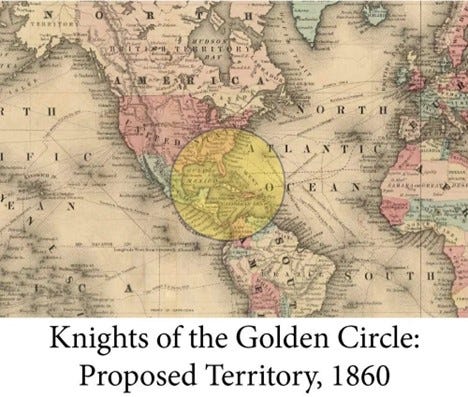


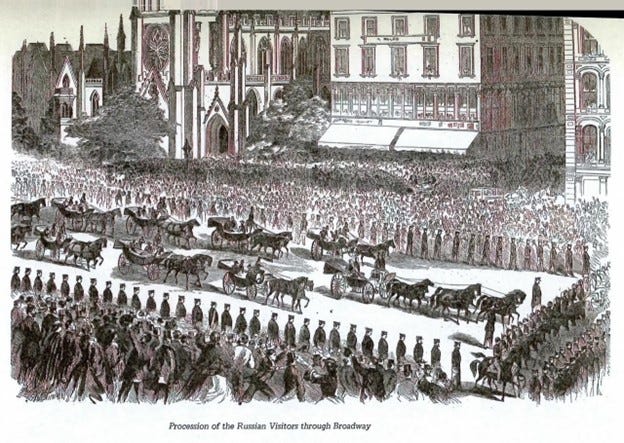
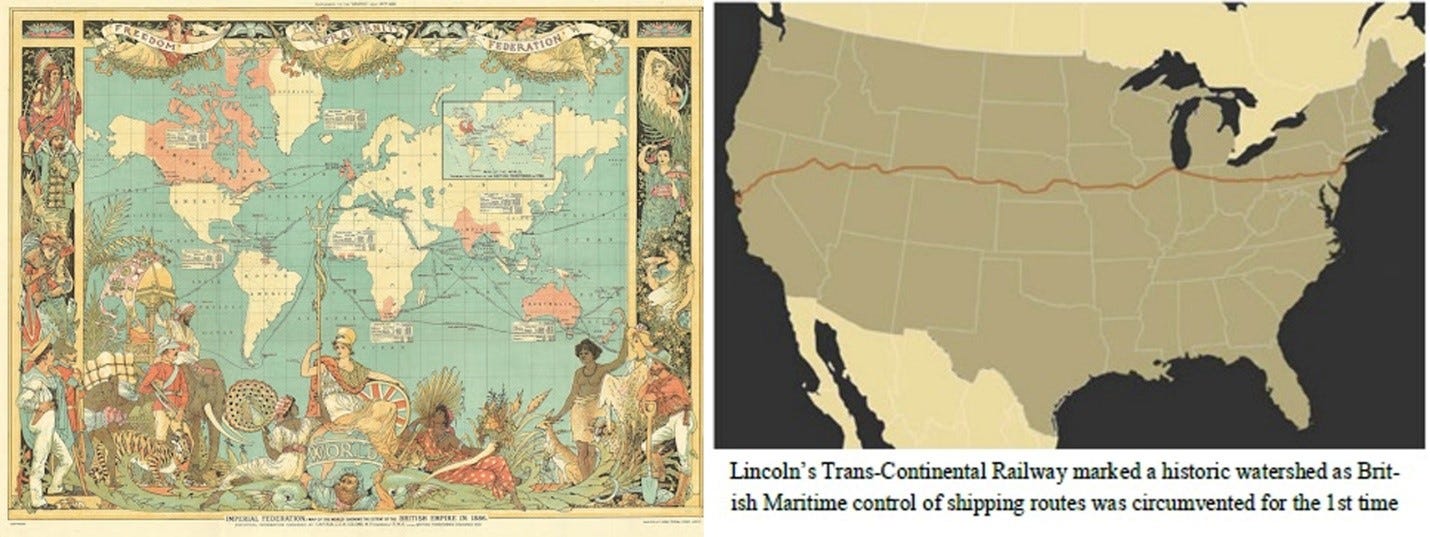



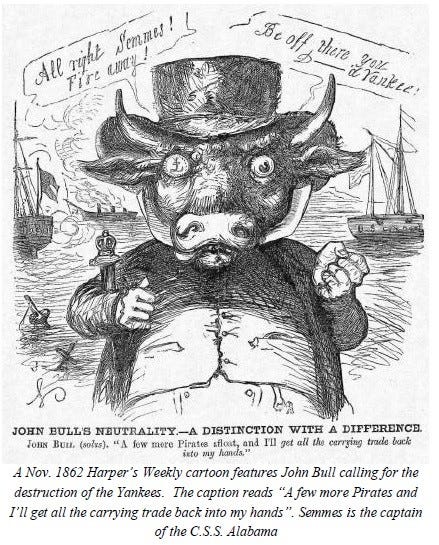
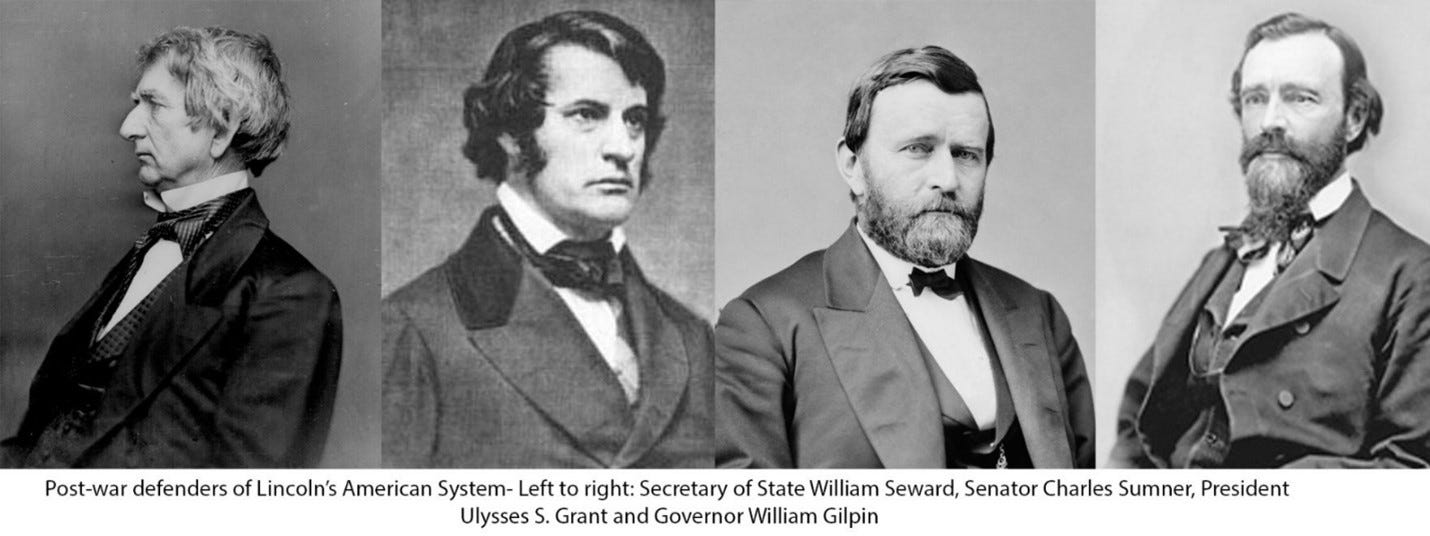
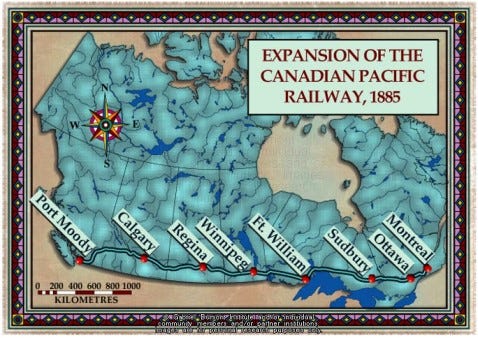
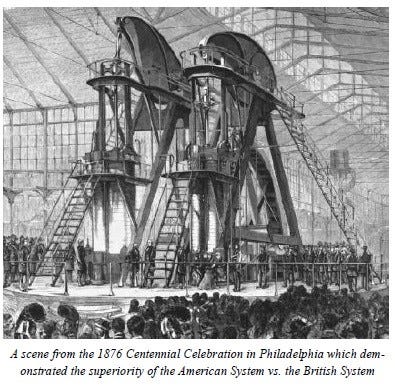
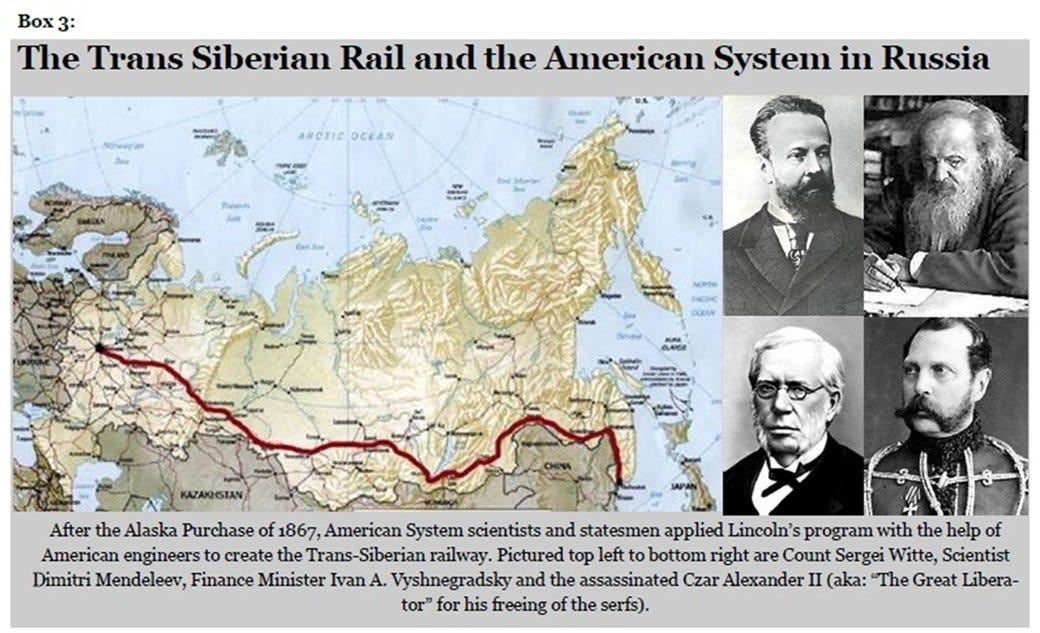
Matt this was all new news to me. I am not sure if I slept through a whole year of history classes, forgot such amazing information or if like so much of the other Truth this was just hidden from me.
This was a fascinating journey through our collective history and highlights how the DS Rat Bastards have lied to us for generations (more like millennia).
I loved this series and look forward to more of your writing and of course future episodes of Breaking History.
God Wins!
God Bless!!!
For those looking for the article linked regarding "Russia’s 1863 intervention into the Civil War" and find the link broken as I did, you can find the article here:
https://cynthiachung.substack.com/p/why-russia-saved-the-united-states
Well worth a read. Truths that the British Cabal and Prussians would prefer you not know.